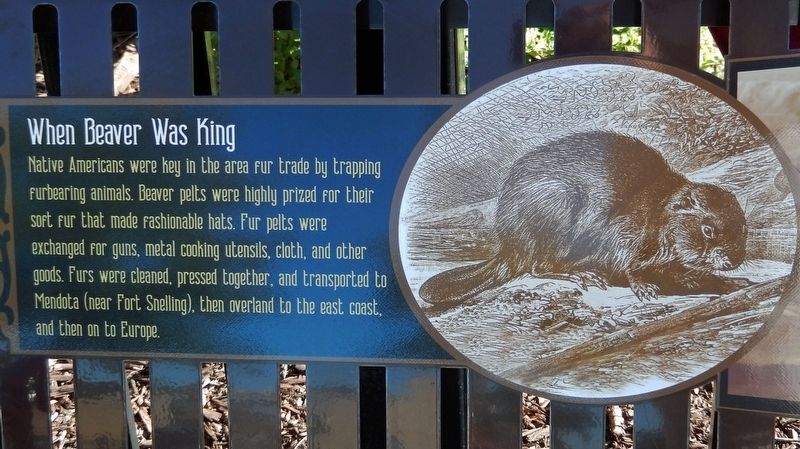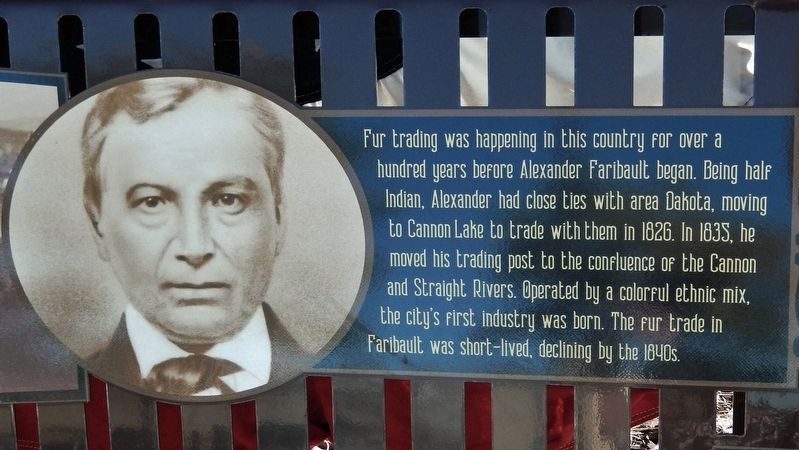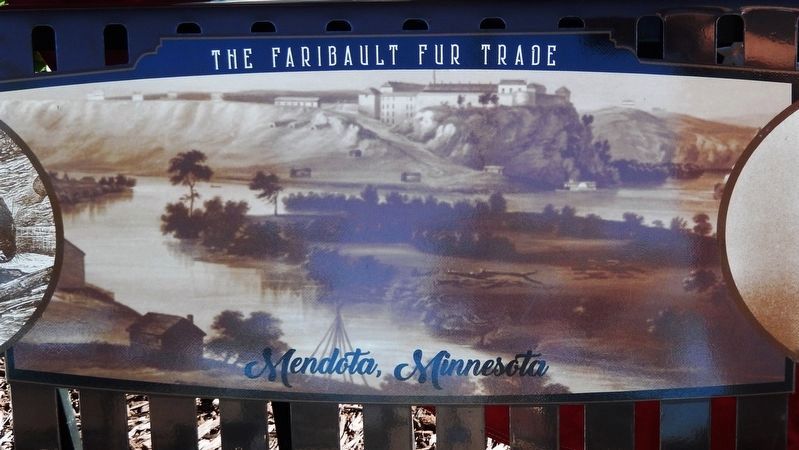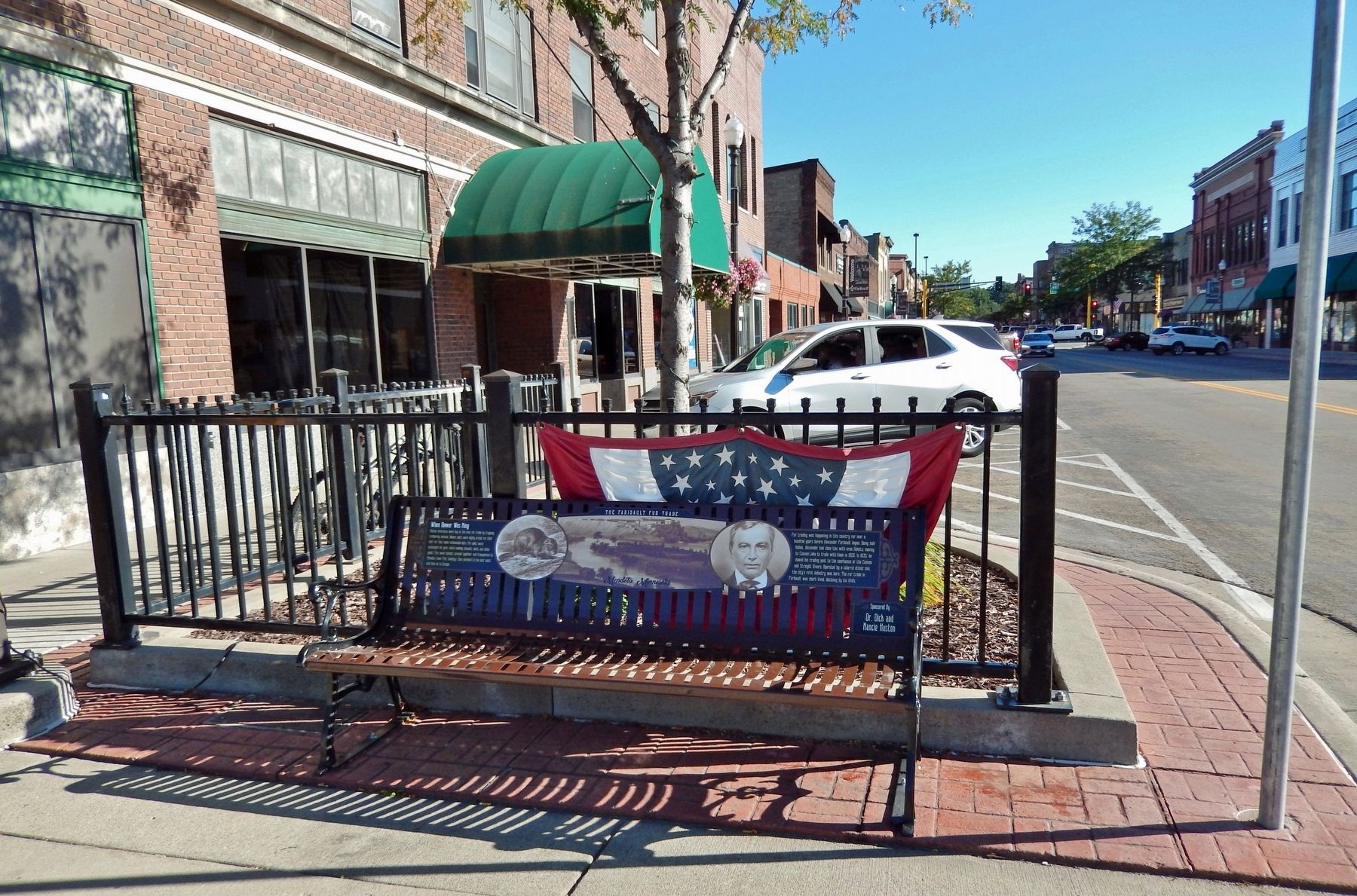Faribault in Rice County, Minnesota — The American Midwest (Upper Plains)
The Faribault Fur Trade
When Beaver Was King
Native Americans were key in the area fur trade by trapping furbearing animals. Beaver pelts were highly prized for their soft fur that made fashionable hats. Fur pelts were exchanged for guns, metal cooking utensils, cloth, and other goods. Furs were cleaned, pressed together, and transported to Mendota (near Fort Snelling), then overland to the east coast, and then on to Europe.
Fur trading was happening in this country for over a hundred years before Alexander Faribault began. Being half Indian, Alexander had close ties with area Dakota, moving to Cannon Lake to trade with them in 1826. In 1835, he moved his trading post to the confluence of the Cannon and Straight Rivers. Operated by a colorful ethnic mix, the city's first industry was born. The Fur trade in Faribault was short-lived, declining by the 1840s.
Topics. This historical marker is listed in these topic lists: Industry & Commerce • Native Americans • Settlements & Settlers • Waterways & Vessels. A significant historical year for this entry is 1826.
Location. 44° 17.747′ N, 93° 16.099′ W. Marker is in Faribault, Minnesota, in Rice County. Marker is at the intersection of 5th Street Northeast and Central Avenue North, on the left when traveling west on 5th Street Northeast. Marker is mounted on a bench at the southeast corner of the intersection. Touch for map. Marker is at or near this postal address: 429 Central Avenue North, Faribault MN 55021, United States of America. Touch for directions.
Other nearby markers. At least 8 other markers are within walking distance of this marker. Downtown Faribault 1888 (a few steps from this marker); Flour Milling & Woolen Milling (within shouting distance of this marker); Minnesota State Academy for the Deaf (within shouting distance of this marker); OCHS Building (within shouting distance of this marker); Faribault Supports the Military (about 300 feet away, measured in a direct line); Seabury Divinity School & Taopi "Wounded Man" (about 400 feet away); Faribault Riverfront 1880 (about 400 feet away); Government in Faribault (about 400 feet away). Touch for a list and map of all markers in Faribault.
Also see . . .
1. The Fur Trade.
After the War of 1812 there were three main parties involved in the Upper Mississippi fur trade: Native Americans (primarily the Dakota and Ojibwe), the fur trading companies, and the US government. These parties worked together and each had something to gain from a stable trading environment. By 1823, the American Fur Company controlled the fur trade across much of present-day Minnesota. The company’s headquarters was at the confluence of the Minnesota and Mississippi rivers, at a post called New Hope, or more commonly called St. Peters. Today it is called Mendota.(Submitted on December 10, 2022, by Cosmos Mariner of Cape Canaveral, Florida.)
2. Who Was Alexander Faribault?.
He set up a trading post at Traverse des Sioux, a few miles north of St Peter, and operated another on Lake Elysian in Waseca County where he traded with the Wahpekute Indians. Faribault and his companions established three to four trading posts in this general area between 1828 to the mid-1830s and, in 1834, set up a post at the confluence of the Cannon and Straight Rivers. In 1844, he moved the post to the site of present-day Faribault and there, with his earnings from the fur trade, built the first frame house in the area in 1853.(Submitted on December 10, 2022, by Cosmos Mariner of Cape Canaveral, Florida.)
Credits. This page was last revised on December 10, 2022. It was originally submitted on December 9, 2022, by Cosmos Mariner of Cape Canaveral, Florida. This page has been viewed 113 times since then and 21 times this year. Photos: 1, 2, 3, 4. submitted on December 10, 2022, by Cosmos Mariner of Cape Canaveral, Florida.



